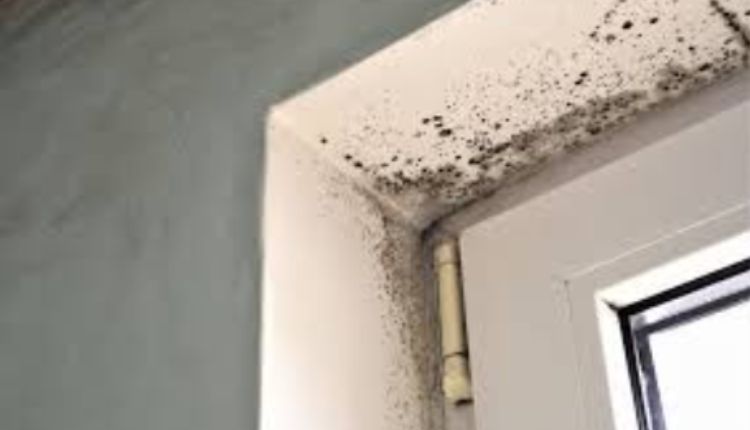When a Drip Becomes a Disaster
Water has a way of finding its path into floorboards, behind drywall, and through ceilings. What often starts as a slow drip under the sink or a small pool forming near the water heater can escalate into a much bigger problem if left unchecked. Many homeowners assume that once a puddle is mopped up, the danger is gone. But hidden moisture doesn’t just evaporate; it festers.
The damage caused by unnoticed or untreated water leaks is not always visible on the surface. Behind walls or under carpets, water can linger for days or even weeks, creating the perfect conditions for mold growth. This silent transformation can have serious consequences for your health and your home. That’s why it’s so important to act fast when something seems off. By the time the need for urgent plumbing work becomes obvious, mold may already be growing.
Water Damage Isn’t Always What It Seems
When people think of water damage, images of flooded basements or burst pipes often come to mind. While those are extreme examples, the most dangerous water damage usually comes from small, continuous leaks that go unnoticed. A hairline crack in a pipe, a slowly leaking faucet, or even a faulty seal around a toilet can release enough moisture over time to saturate insulation, wood, or drywall.
Unlike a sudden flood, these issues develop quietly. You might notice a musty odor, discoloration on your walls, or even warping in the floors. By then, mold spores may already be circulating through the air. It doesn’t take much, a little warmth, some darkness, and moisture, for mold to thrive.
What makes this so tricky is that mold doesn’t wait. Within 24 to 48 hours of water exposure, mold can begin to grow. It’s not always visible, and many homeowners won’t see the warning signs until it’s well into the colonization stage. At this point, the problem isn’t just moisture, it’s contamination.
The Health Risks of Letting Mold Settle In
The dangers of mold are often downplayed, but for many people, especially those with asthma, allergies, or compromised immune systems, the health effects can be serious. Prolonged exposure to mold spores can trigger respiratory problems, skin irritation, sinus congestion, and persistent coughing. Children and older adults are especially vulnerable.
More concerning is the type of mold that may develop. Stachybotrys, often called “black mold,” thrives in consistently damp areas and can release mycotoxins into the air. While not all mold is toxic, there’s no safe amount of mold to have in your home. If you suspect it’s growing, you need professionals with the tools and experience to locate, test, and remediate it.
That’s where websites like https://riskfreeserv.com come into play. They specialize in identifying hidden water damage and removing mold safely and effectively. The longer you wait, the more costly and disruptive the remediation process becomes. What starts as a relatively minor cleanup job can quickly evolve into full-blown restoration work.
Why Fast Action Matters More Than Ever
One of the most critical parts of dealing with water damage is time. Every hour matters. The sooner moisture is removed and the area is dried out, the lower the chances of structural damage and mold development. That’s why emergency services are so essential.
It’s not just about drying the surface. Water can seep deep into porous materials, wood, drywall, and insulation, creating ideal mold habitats. Professional water damage response teams don’t just mop things up; they bring in commercial-grade drying equipment, moisture meters, and infrared cameras to detect what the eye can’t see. They check for humidity levels behind the walls and underneath the flooring, ensuring no hidden pockets of moisture are left behind.
Waiting for the weekend to end, or trying to DIY the problem with fans and towels, may cost you more in the long run. Water damage repair becomes exponentially more expensive when you factor in mold remediation, furniture disposal, or even having to tear down entire sections of your home.
Connecting the Dots: Plumbing and Prevention
It’s easy to assume that plumbing issues and mold are separate problems, but they’re closely intertwined. Most mold problems begin with water issues that trace back to plumbing, whether it’s a leak under the sink or a broken pipe inside a wall. Many plumbing emergencies, when addressed too late, lead directly to mold development.
That’s why preventive plumbing inspections can be just as important as routine HVAC maintenance or roof checks. Detecting corrosion, pressure irregularities, or slow leaks early can save your home from a costly chain reaction. It’s not glamorous, but it’s one of the smartest things a homeowner can do.
Even more important is to never ignore signs of trouble. A sudden spike in your water bill, water stains on ceilings, or strange smells are all signals that something may be wrong. These clues should never be ignored. Often, they are the only indicators of deeper issues that could turn into a mold problem in a matter of days.
What You Don’t See Can Hurt You
The real danger of water damage lies in what’s hidden. Moisture may disappear from view, but it doesn’t vanish; it migrates. And when it settles into the hidden corners of your home, it becomes a breeding ground for mold that can damage your property and your health.
Taking swift action is the best defense. Whether it starts with a plumbing issue or something as simple as a forgotten leaky tap, the clock starts ticking the moment water touches an absorbent surface. Don’t wait for visible mold, musty smells, or health symptoms to appear. Trust professionals who can catch these problems before they spiral, and always treat water damage like the silent threat it is.
Because in the end, it’s not just about a wet floor. It’s about what that water leaves behind.






